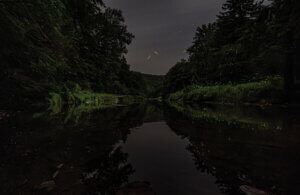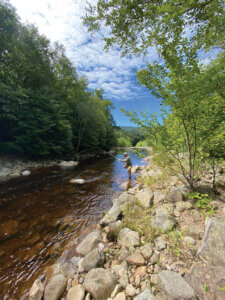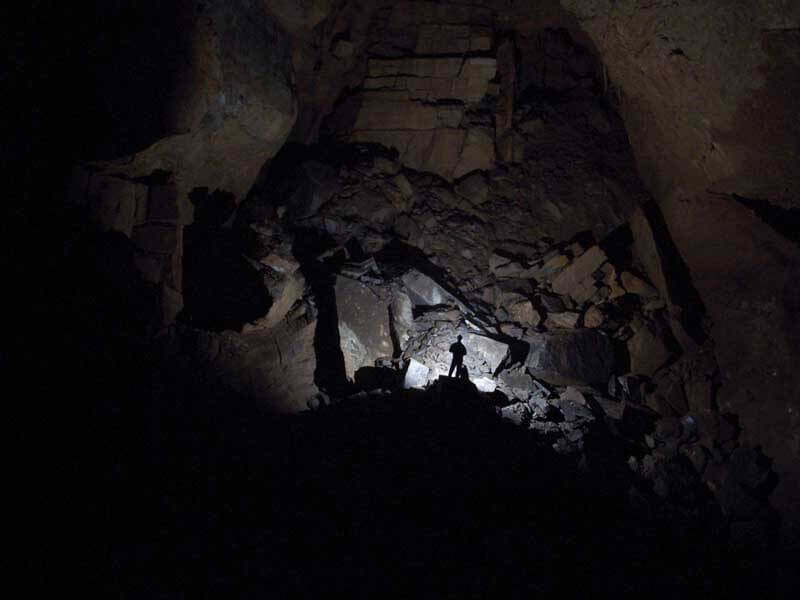
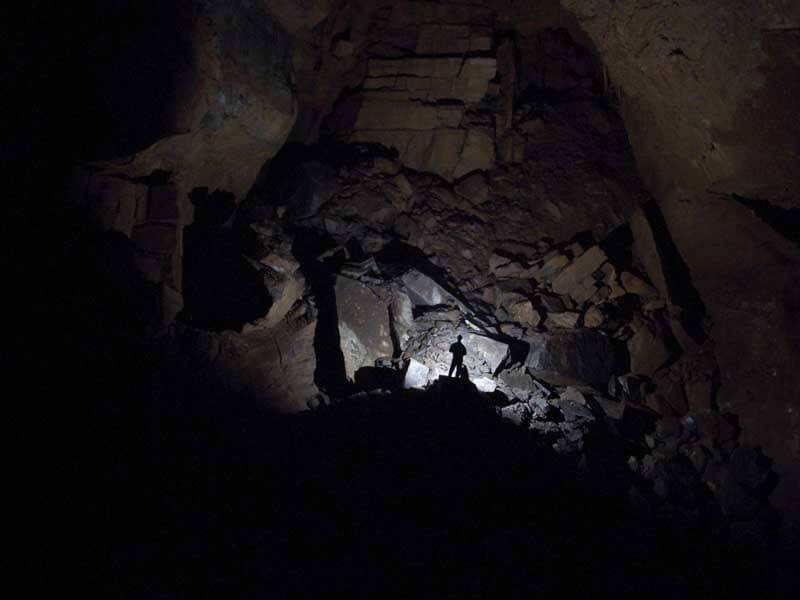
Hundreds of feet below Germany Valley’s lush farmland sits an extensive system of caves and a threatened ecosytem.
Pulling off U.S. Route 33 into Germany Valley, visitors enter a valley of farmland, dotted by farm buildings and cradled by the lush hills. Reminiscent of landscapes found throughout its namesake, the area has been home to a handful of German families since it was settled by Europeans during the French and Indian War. The Hinkles, the Lamberts, the Harmans, all are familiar names in these parts, belonging both to people and to landmarks. In the early 1760s, the area now known as Germany Valley was wide open compared to the relatively cramped Pennsylvanian and coastal settlements. Fertile land nurtured by the south branch of the Potomac River was easy to cultivate while the bowl-shaped landscape was a natural fortification. By the time of the Revolutionary War, the Lamberts, the Hinkles, and many others were firmly established in their rural farming communities, keeping German customs, language, and religions alive in the new world. Still in private hands, the land making up Germany Valley is known for its rich soil, fine timber, and deep limestone quarries. As striking as the landscapes are above the ground, what’s perhaps more striking is what lies below ground.
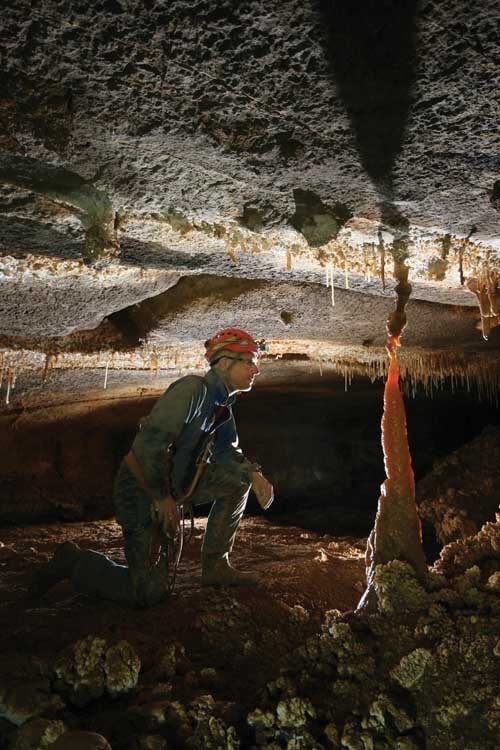
A series of twisting caverns, a strange landscape lies hundreds of feet below the lowest point in the valley. Seneca Caverns is the most widely known. A commercial cave since the 1930s, Seneca is renowned for its cave formations of glittering flowstone and its history as a refuge for the Seneca Indians, but it’s far from the only cave in the area. Experts estimate there’s a system of nearly 90 miles of caves winding below Germany Valley, an area that is only 20 square miles aboveground.
“Many of the kids growing up visited caves on family farms or neighbors’ farms,” says Rick Lambert, a Germany Valley native and avid caver. Though his parents left Germany Valley in search of work when Lambert was 5 years old, he returned every summer to stay with his grandparents on the family farm. “My granddad owned 17 caves,” he says, including a part ownership of Seneca at one point. “It was like being at an amusement park every day.” But Germany Valley’s wild caves are far different from the lighted pathways at Seneca Caverns. “It’s cold—54 degrees,” Lambert says. “And it takes a few minutes for your eyes to adjust to the darkness, but slowly they do.” The shadows of fallen rock loom in the corners of your eyes just out of reach of your flashlight or headlamp. Sitting in total darkness for the first time can be mind-boggling. You can almost feel your eyes dilating to detect even a sliver of light. But, of course, deep under the ground, there’s none to be found.
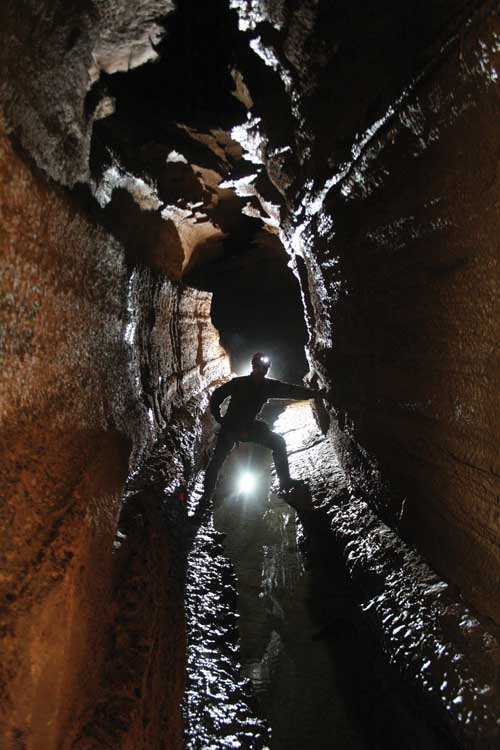
With their entrances sitting firmly on private land, many of the wild caves in Germany Valley are closed to all but a few select groups. There, sitting in complete darkness, full ecosystems of microorganisms, vertebrates, and invertebrates live within the caves. It’s to protect the largest of these species that private landowners have partnered with the government and a group of cave surveyors to keep humans out.
Hellhole and Its Endangered Species
Several species of bats use the Germany Valley caves as a hibernaculum, sleeping through the winter in the caves’ mild temperatures that sit in the mid-40s year-round. But one of these, Hellhole, is particularly special. Famous among members of the National Speleological Society for its entrance, a 154-foot drop, Hellhole is also one of the largest hibernaculum sites in the world for two endangered and federally protected species of bats, the Virginia big-eared bat and the Indiana bat, as well as other species.
Like bears, bats hibernate through the winter with stores of fat reserves. When disturbed from its winter rest, whether by human interruption or sickness, a bat’s fat stores are quickly depleted and it may die. Hellhole is the largest winter resting place in the Mid-Atlantic for the Indiana bat, and it is one of the world’s largest hibernation sites for the little brown bat. In the case of the Virginia big-eared bat, Hellhole contains approximately 45 percent of the world’s total population during winter months.
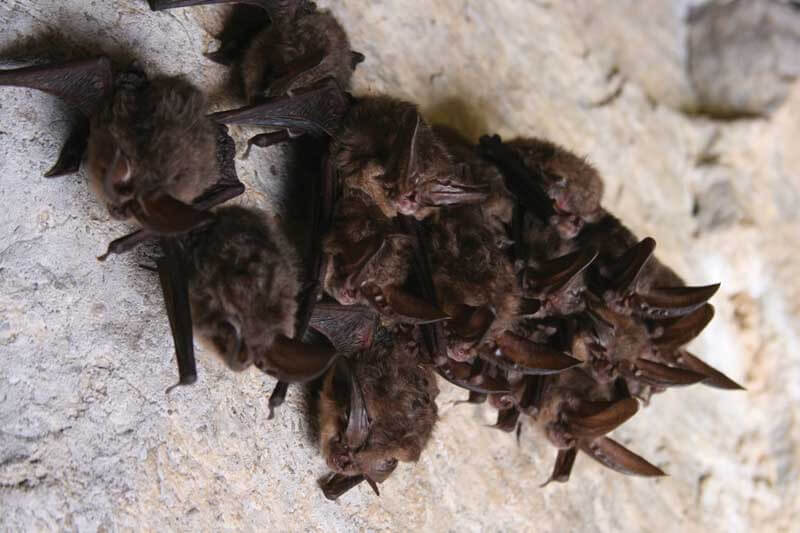
Already vulnerable to human disturbance during hibernation months, by 2010 these creatures faced a new threat: white-nose syndrome—a fungal disease named for the white growth that appears on the mouths and noses of affected bats. The fungus grows on the bats’ skin, creating erosions, destroying wing tissue, dehydrating their bodies, and arousing them from hibernation. “It does a lot of things,” says Craig Stihler, wildlife biologist for the West Virginia Division of Natural Resources, “but it definitely affects their metabolism and fat supply by waking them up twice as often as they should. If you have X amount of fat to get you through the winter and you start using it twice as fast, you’ll run out.”
The West Virginia Division of Natural Resources began collecting data on the bats in the mid-1980s, taking trips to survey the populations in parts of the caves. In 2007, before white-nose syndrome showed up, there were 95,000 little brown bats in two of Hellhole’s main areas, according to Stihler’s population counts. In 2013 the survey found fewer than 2,500 little brown bats left in those areas. “In West Virginia, we’ve lost 97 percent of our little brown bats—it’s your nondescript, small brown bat. It’s what people visualize when they think of a bat. They’ve gone from being the most common in the state to one of the rarest.”
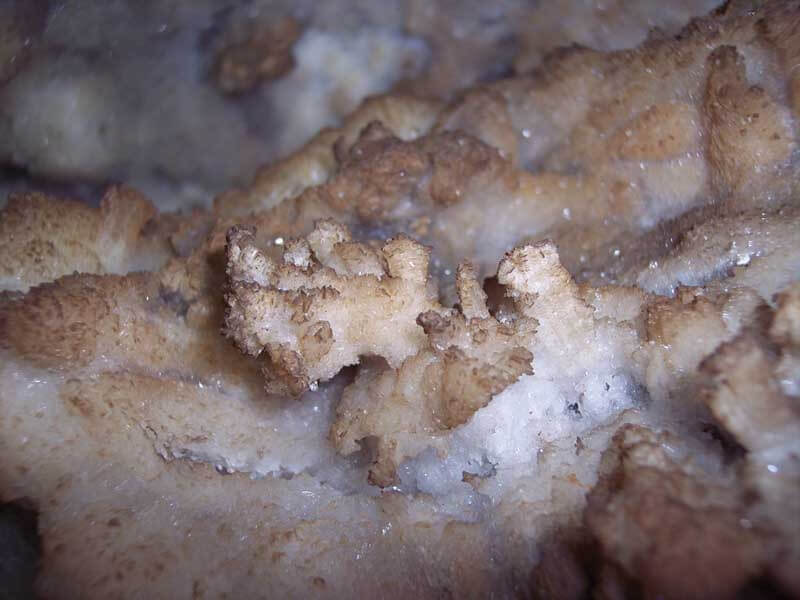
Estimates show that even if white-nose syndrome was eradicated today, it could take 500 years for bat populations to rebound to what they were 10 years ago. Going into these caves now is just eerie, Stihler says. “You know what should be there. In some caves where we should see several hundred bats, we find two. If you don’t know there should have been hundreds, then it might seem normal. But when you know what was there in the past, it’s like walking into a ghost town.”
Biologists and Cavers Team Up
Stihler and the West Virginia Division of Natural Resources take population counts every few years aided by the area’s cavers and the Germany Valley Karst Survey. Dubbed GVKS, the group regularly explores and surveys the caves under Germany Valley to remap the area’s geology. The group formed in the late 1990s in an effort to help keep the limestone industry from breaking into the hibernaculum cave systems and damaging their fragile ecosystem.
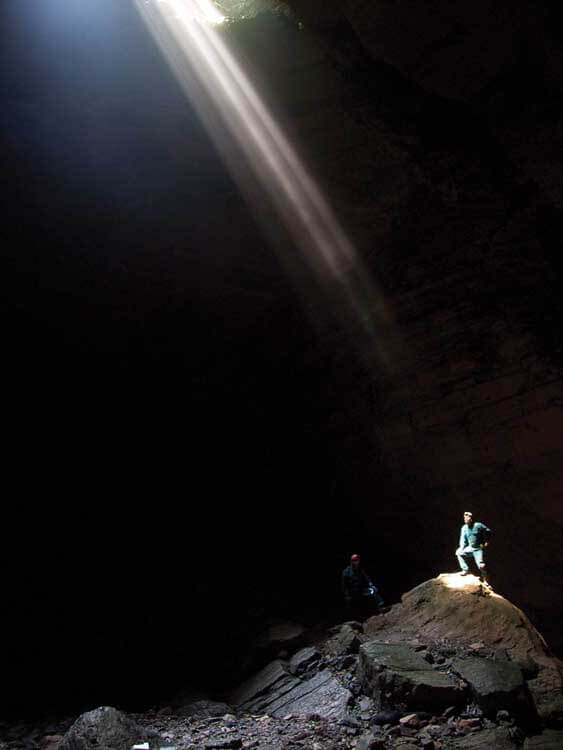
Greer Industries already had an established presence on the northern end of the valley and actually leases the property where the Hellhole cave entrance lies. When the company was looking to expand south, Lambert’s family farm was one of those that Greer was attempting to buy. Because of proximity to threatened species, Greer assists in monitoring cave conditions for the government agencies watching the bat populations and agreed to keep limestone extraction blasting at least 500 feet away from a known passageway connected to Hellhole. Lambert sent a letter to the caving clubs in West Virginia and some in Virginia calling on them to help dig open the caves on his family’s property to see whether any of them connected to the hibernacula. Even after successfully mapping his family’s caves, the cavers continued to come. “Eventually we formed GVKS,” Lambert says. “It’s an informal organization, but because of what we do, we seem more formal than we are.”
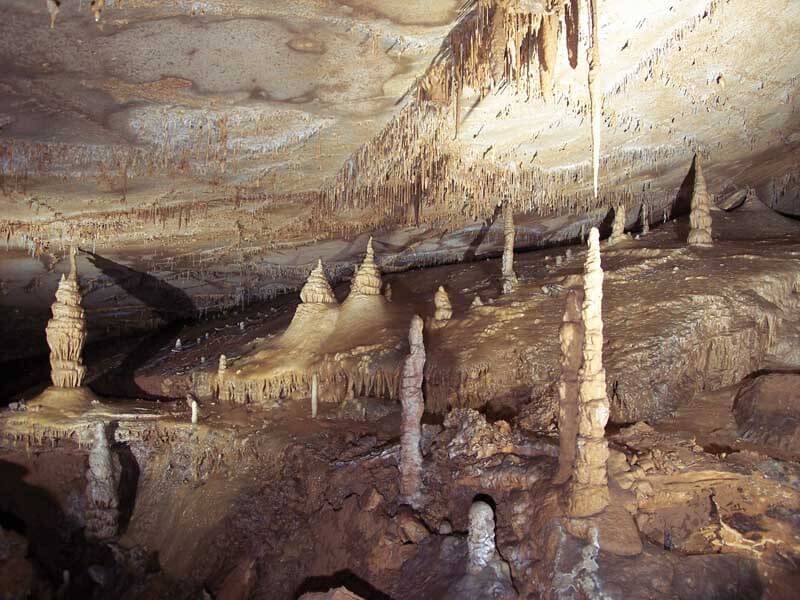
“In some caves where we should see several hundred bats, we find two.”
Craig Stihler
wildlife biologist, West Virginia Division of Natural Resources
In most cases, GVKS is the only group with permission from the landowners, Greer, and the West Virginia Division of Natural Resources, and the U.S. Fish and Wildlife Service to enter the caves, but Lambert says the group is open to anyone who wants to join. The single factor that keeps the group relatively small is that cave surveying isn’t a party. “It isn’t recreational caving so it takes a special person to enjoy it, and most people don’t,” Lambert says. “Nine out of 10 people who help on a survey project never come back a second time, but we’re an open survey so we allow everyone to come.”
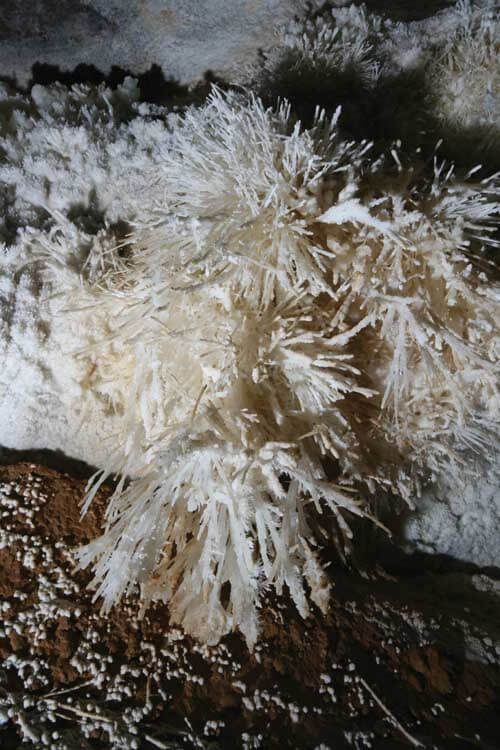
Those who do take on a survey project have the opportunity to see one of the largest cave systems in the United States in its natural state. “It’s big,” Lambert says. “It totally underlays the entire valley, well below where Greer is mining, well below everything. It has a river inside that feeds into the valley spring. It has dome pits that are 500 feet high, massive rooms. There are commercial quality formations in Hellhole—aragonite bushes and large flowstone formations that look like they were from Mammoth Cave or Carlsbad.”
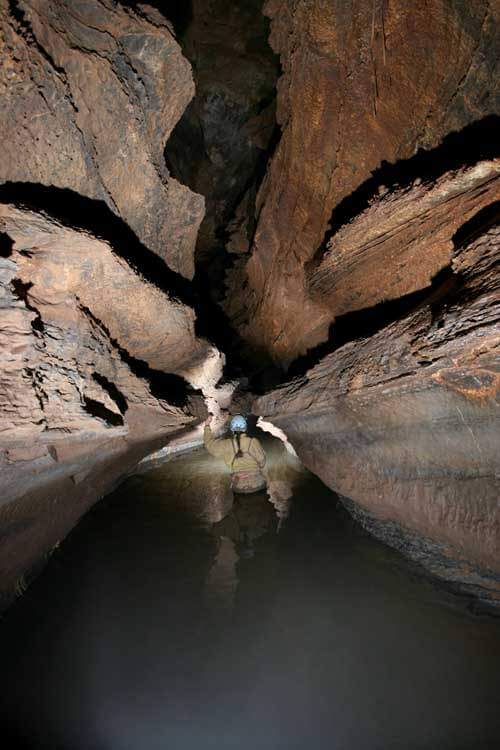
To date GVKS has mapped more than 70 miles of passage in the valley, including more than 40 miles in Hellhole, making the cave one of the longest in the country. “The real question is how much we have not mapped yet,” says Gordon Brace, a GVKS caver who also assists in the West Virginia Division of Natural Resources bat counts. “This is the unknown quantity and is what keeps the cavers coming back for more. Who doesn’t like being the first to see virgin passage, to see what is around the next bend, or what lies at the bottom of the pit in the floor?”
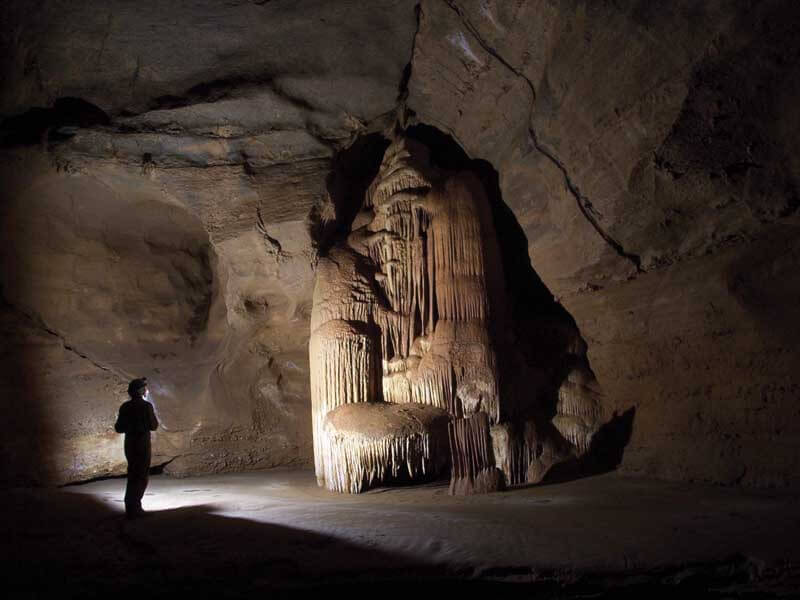
Brace guesses Hellhole has the potential to be an 80- to 90-mile cave system, but because of the threatened bat populations, the group intentionally keeps its explorations south of the hibernacula. “Historically, the importance of this area is great,” Brace says, and it’s not just because of the bats. The National Speleological Society, the largest organization of cavers in the country, cut its teeth in Germany Valley in 1941 when it first formed, inventing many modern caving techniques, including a vertical drop in Hellhole. “One can easily argue that caving as we know it in America started in this valley.”
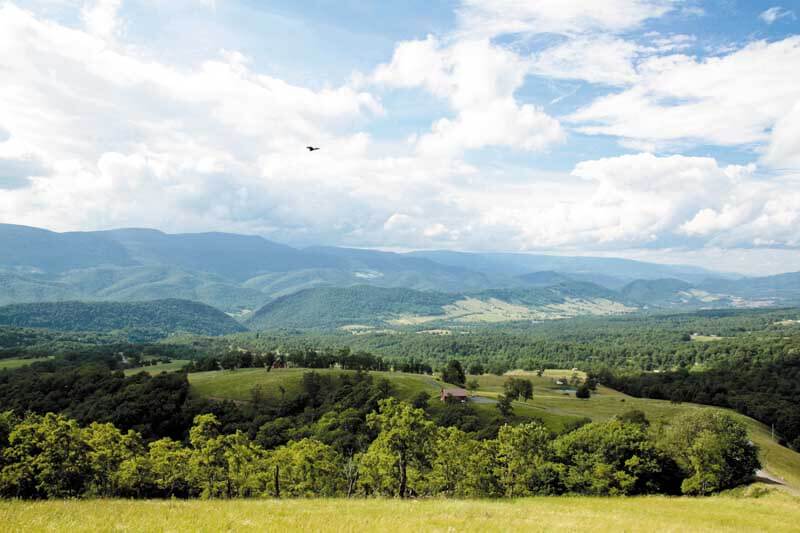
This story was originally published in the March 2015 issue of Wonderful West Virginia.
written by Katie Griffith
photographed by Brian Masney




